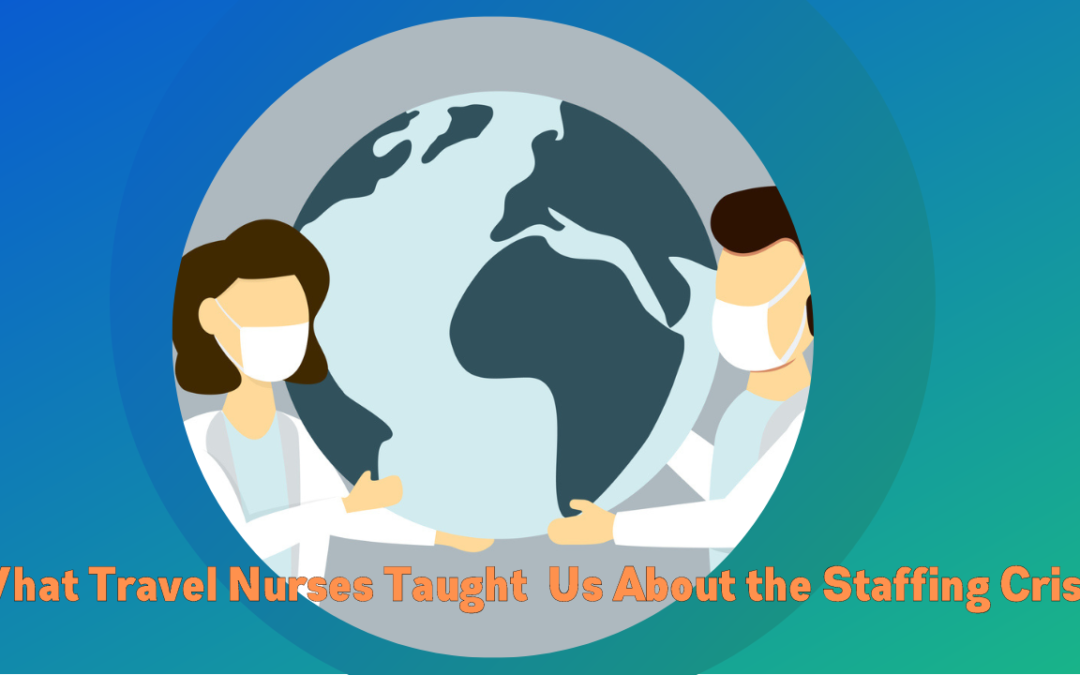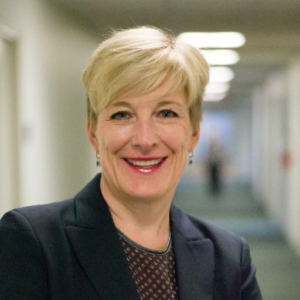For the last two years, hospitals have been reliant on travel nurses, with the demand for travel nurses skyrocketing. However, turnover has recently begun to increase, and hospitals and health systems are facing a turning point in addressing the staffing shortage crisis.
Minority Nurse chatted with Beth Brooks, Ph.D., RN, FACHE, and Clinical Advisor to Vivian Health, about how travel nursing is changing the nursing workforce and what hospitals can do to reconfigure the work environment to optimize the existing workforce.
How is travel nursing changing the nursing workforce?
There have been travel nurses in the 30 years I’ve been a nurse. Of course, there have always been nurses who have chosen a full-time travel career path because they either wanted to travel the country or wanted the challenge of building robust clinical skills in a particular specialty. But for the most part, these travel nurses primarily filled temporary vacancies during past nursing shortages or labor strikes.
There are currently 4.4 million RNs in the U.S. nursing workforce. Between 2020 and 2021, the Bureau of Labor Statistics reported a 55% increase in travel nursing (from 43,160 to 66,790 RNs), representing 2.34% of the RN profession. Because travel nurses were all over the country working for different health systems during COVID, they are in a unique position to speak to how prepared (or unprepared) employers are to support nurses in their careers and mental health. As travel RNs consider permanent work, they are looking for employers to prioritize their mental health and well-being and provide flexibility, autonomy, career progression opportunities, and higher compensation to feel supported and respected.
Hospitals and health systems face a turning point in addressing the staffing shortage crisis. So what can we do to bring nurses back to nursing?
The industry has been facing many challenges. Recent research reveals that 600,000 Boomer RNs are expected to retire by 2030. The latest American Nurses Foundation (ANF) Workplace Pulse survey revealed that nearly half (49%) of direct patient care nurses intend to leave their position, 19% intend on leaving in the next six months.
That said, there’s some good news: 18-29-year olds remain interested in nursing careers. The National Nurse Work Environment study by the American Association of Critical-Care Nurses indicated that 75% would recommend nursing as a career, and interest in nursing school remains high. Rebuilding the workforce with these nurses is crucial, but the need to reconfigure the nursing workforce is equally important. This means adjusting how hospitals address staff churn and changing the care delivery model to ensure nurses are working at the top of their licenses. In addition, increasing the focus on mental health and well-being support, improving compensation, and reducing the complexity gap as more veteran nurses leave the profession and are replaced by newer, less experienced RNs.
Another interesting trend we’re watching is the new careers available to nurses. ANF’s Workplace survey indicates that 18% of RNs intend to find a nursing position outside the hospital setting, showing a growing interest in career pathing among nurses to build their career so it’s tailored to their specific lifestyle and interests.
During the pandemic, travel nurses tripled their pay by moving from job to job. But many see the short-lived boom as a temporary fix for a long-term decline in the nursing profession. So, do you think the travel nurse gold rush is over?
Travel nursing is not for everyone. It is its specialty, like pediatrics, critical care, peri-operative, medical/surgical nursing, or nursing leadership. Every nurse chooses a specialty area to focus on at some point in their career. Travel nurses feel that a higher salary compensates them for ever-changing patient assignments and adapting quickly to new organizations, making travel nursing their specialty. Some generational cohorts, such as millennials, are also drawn to travel nursing, but typically for a finite period.
Nurses attracted to travel nursing for the first time did so because early in the pandemic, they wanted to assist in regional COVID “hot spots.” Certainly, the salaries were a big draw. Still, these new travel nurses enjoyed control over their schedules, more autonomy, and flexibility, but whether these factors outweigh what they gave up – being part of a team, knowing the system, and professional development opportunities – remains to be seen.
We don’t know how many RNs will return to permanent roles or choose travel nursing as their specialty.
What has been the impact of travel nurses treating COVID patients for two traumatic years?
The pandemic has impacted every nurse – research studies of stress, fatigue, anxiety, moral distress, burnout, and some post-traumatic stress disorder reveal these findings. And let’s not forget that most of the 100,000 RNs who left the workforce during the pandemic were 49 years old or younger – not retirement age, as many assumed. What has been interesting is looking at the years of experience of travel nurses data: RNs who decided to travel for the first time during the pandemic report slightly higher stress, fatigue, and burnout levels than experienced travel RNs.
Do travel nurses feel like they answered the call and raced to help COVID patients, and now they’re being cut? Are the cuts attributed to federal and state funding drying up or something else?
During the early phases of the pandemic, permanent staff nurses were less tolerant of the initial drastic nurse staffing cuts when elective procedures were canceled. Then, during COVID surges, it was all hands on deck. This was hugely unsatisfying and may have fueled the interest in travel nursing (in addition to high salaries).
Nurses understand that when patient census decreases, there is less need for RNs, so their unit assignment or work schedule may change. This is true of permanent RN and travel RN staff. A lower patient census for RNs on travel contracts has led to a flurry of travel contract re-negotiations with hospitals. Negotiations to either end a contract early happened because patient census has decreased, or, where travel RN agencies benefited from federal and state funding by drastically increasing their billing rates, hospitals have been re-negotiating contract rates.
What can hospitals do to reconfigure the work environment to optimize the existing nursing workforce?
There are two areas to highlight: The first one is toxic cultures. Bullying, incivility, and violence perpetrated by patients and families towards nurses and hospital staff occurred at alarming rates. In acute care settings, 65% of RNs reported bullying or incivility, and 40% of RNs experienced violence. Nurses must have safer and more secure workplaces to provide the best care.
The second is to use more sophisticated math for nurse staffing and scheduling. Some savvy hospitals now view nurse staffing and scheduling as a logistics problem. Using a logistics management approach enables hospitals to use the science of operations research and more powerful math like linear programming. Predictive modeling is used to deploy the right number of staff with the right skills, at the right location, at the right time, with the appropriate patient assignment, and factor in the lowest cost with the best patient outcomes. This complex problem requires big data and sophisticated math, which is different from how nurse staffing and scheduling is typically done today. Nursing staff budgets are based on the “flaw of averages,” using rudimentary math to base nurse staffing on the census at midnight (Average Daily Census) and Nursing Care Hours per Patient Day (HPPD). This inevitably leads to some shifts being overstaffed (a nurse is sent home or floated to another unit) and some understaffed (not enough nurses during the day when the patient census is higher than at midnight). It is very dissatisfying for nurses.
Nurses are looking for scheduling flexibility and control. Health systems should consider creating different scheduling options like 8- or 10-hour shifts. Since nurses are familiar with gig economy-type jobs or travel nurse positions, they should also consider implementing these or similar options, which will be particularly attractive within large, geographically dispersed health systems.
Please discuss Vivian Health’s State of the Healthcare Workforce Survey findings. For example, why are nurses willing to trade the higher pay of travel nursing for a stable job with a strong employer?
Travel nurses learned to enjoy the sense of control and greater flexibility they had over their schedule while traveling during the pandemic. As a result, some want to continue traveling to see the country or build a robust clinical skill set. In addition, the pandemic created numerous work-at-home options. Those nurses with a partner who can “work from home” may choose to remain a travel nurse to continue enjoying greater control and autonomy regarding where and when they work.
It is becoming clear that while some first-time travel nurses want to return to permanent positions, they are demanding healthier work environments, flexible schedules, a sense of control, better staffing, more autonomy, and more significant compensation. Vivian Health’s recent survey asked travel nurses about their future career plans. Fifty-five percent were seeking a permanent position with a median salary of $65 per hour and being part of a team.
Why are nurses willing to trade the higher pay of travel nursing for a stable job with a strong employer?
Travel nurses learned to enjoy the sense of control and greater flexibility they had over their schedule while traveling during the pandemic. As a result, some want to continue traveling to see the country or build a robust clinical skill set. In addition, the pandemic created numerous work-at-home options, so those nurses with a partner who can “work from home” may choose to remain a travel nurse to continue enjoying greater control and autonomy as to where and when they work.
It is becoming clear that while some first-time travel nurses want to return to permanent positions, they demand healthier work environments, flexible schedules, a sense of control, better staffing, more autonomy, and greater compensation. Vivian Health’s recent survey asked travel nurses about their future career plans. Fifty-five percent were seeking a permanent position with a median salary of $65 per hour to be part of a team.
What about global nursing? What is the value of an American nursing degree internationally? What role do travel nurses play abroad?
First, there is a global nursing shortage. While we usually see nurses from abroad coming to the U.S. to work, many U.S. RNs travel abroad to work. There are a few interesting differences: First, travel contracts are for 1-2 years, not 13 weeks. Second, RNs traveling overseas need a U.S. Passport, an active, unencumbered RN license from a U.S. state, vaccines, and perhaps a work visa. Third, a language proficiency exam and board certification in a nursing specialty may be required. Finally, RNs who want to travel overseas must check each country’s regulations since they differ.
And yes, the value of an American BSN degree is significant. Unlike the U.S., where the minimum requirement for nursing is an AS degree, the BSN degree is the minimum requirement to be licensed in European countries.
Are you looking for your next career opportunity? Check out our career resources. Then, your next job can be waiting for you!
- Meet a Champion of Nursing Diversity: Kendra Coles - April 3, 2024
- Meet a Champion of Nursing Diversity: Barbara Bosah - March 13, 2024
- Tune Into New Podcast Series: Conversations About Health Care Delivery in the United States - March 7, 2024




